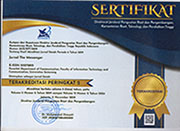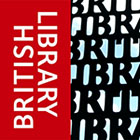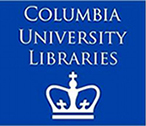Content Analysis of HPV Vaccine Messages on Chinese Social Media
Abstract
Keywords
Full Text:
PDFReferences
Bradley, M. M., & Lang, P. J. (1994). Measuring emotion: the self-assessment manikin and the semantic differential. Journal of Behavior Therapy and Experimental Psychiatry, 25(1), 49 59.
Carcioppolo, N., Jensen, J. D., Wilson, S. R., Collins, W. B., Carrion, M., & Linnemeier, G. (2013). Examining HPV threat-to-efficacy ratios in the Extended Parallel Process Model. Health Communication, 28(1), 20 28.
Carpenter, C. J. (2010). A meta-analysis of the effectiveness of health belief model variables in predicting behavior. Health Communication, 25(8), 661 669.
Cuzick, J., Clavel, C., Petry, K., Meijer, C. J. L. M., Hoyer, H., Ratnam, S., Szarewski, A., Birembaut, P., Kulasingam, S., & Sasieni, P. (2006). Overview of the European and North American studies on HPV testing in primary cervical cancer screening. International Journal of Cancer, 119(5), 1095 1101.
Dewi, R., & Anisa, R. (2018). The Influence of Posyandu Cadres Credibility on Community Participation in Health Program. Jurnal the Messenger, 10(1), 83 92.
Hong, H. (2011). An extension of the extended parallel process model (EPPM) in television health news: The influence of health consciousness on individual message processing and acceptance. Health Communication, 26(4), 343 353.
Janz, N. K., & Becker, M. H. (1984). The health belief model: A decade later. Health Education Quarterly, 11(1), 1 47.
Lang, A. (2006). Using the limited capacity model of motivated mediated message processing to design effective cancer communication messages. Journal of Communication, 56, S57 S80.
Lee, M. J., & Cho, J. (2017). Promoting HPV vaccination online: message design and media choice. Health Promotion Practice, 18(5), 645 653.
Li, S., Hu, T., Lv, W., Zhou, H., Li, X., Yang, R., Jia, Y., Huang, K., Chen, Z., Wang, S., Tang, F., Zhang, Q., Shen, J., Zhou, J., Xi, L., Deng, D., Wang, H., Wang, S., Xie, X., & Ma, D. (2013). Changes in Prevalence and Clinical Characteristics of Cervical Cancer in the People s Republic of China: A Study of 10,012 Cases From a Nationwide Working Group. The Oncologist, 18(10), 1101 1107. https://doi.org/10.1634/theoncologist.2013-0123
Metcalfe, D., Price, C., & Powell, J. (2011). Media coverage and public reaction to a celebrity cancer diagnosis. Journal of Public Health, 33(1), 80 85.
Mubarok, M. (2018). Communication Strategy Based on Islam Value of U-Jek Online Taxibike (Ojek) in Semarang. Jurnal The Messenger, 10(1), 24 33.
Nan, X., & Daily, K. (2015). Biased assimilation and need for closure: Examining the effects of mixed blogs on vaccine-related beliefs. Journal of Health Communication, 20(4), 462 471.
Park, S.-Y. (2012). The effects of message framing and risk perceptions for HPV vaccine campaigns: focus on the role of regulatory fit. Health Marketing Quarterly, 29(4), 283 302.
Rogers, R. W. (1985). Attitude change and information integration in fear appeals. Psychological Reports, 56(1), 179 182.
Rosenstock, I. M. (2005). Why people use health services. The Milbank Quarterly, 83(4).
Shi, J., & Salmon, C. T. (2018). Identifying opinion leaders to promote organ donation on social media: network study. Journal of Medical Internet Research, 20(1), e7.
Watson, M., Shaw, D., Molchanoff, L., & McInnes, C. (2009). Challenges, lessons learned and results following the implementation of a human papilloma virus school vaccination program in South Australia. Australian and New Zealand Journal of Public Health, 33(4), 365 370.
Witte, K. (1992). Putting the fear back into fear appeals: The extended parallel process model. Communications Monographs, 59(4), 329 349.
Witte, K., & Allen, M. (2000). A meta-analysis of fear appeals: Implications for effective public health campaigns. Health Education & Behavior, 27(5), 591 615.
DOI: http://dx.doi.org/10.26623/themessenger.v12i1.1814
Refbacks
- There are currently no refbacks.
Copyright (c) 2020 Jurnal The Messenger
View My Stats [Jurnal The Messenger] is an International Scientific Journal, Published by the Department of Communication, Faculty of Information Technology and Communication, Universitas Semarang (Central Java, Indonesia). It is licensed under a Creative Commons Attribution 4.0 International License.



_11.jpg)




_BARCODE.jpg)
_BARCODE1.jpg)


5.png)










2.png)





